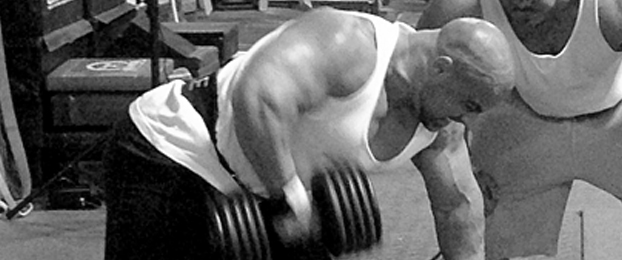
Accelerate recovery and preserve muscle
I had a torn labrum repaired surgically recently, and I want to be aggressive not only with the physical rehabilitation but also via nutrition. What can I do to accelerate recovery and preserve as much muscle as possible since I am not able to train my upper body for a while?
This is a great question. I see so many new patients who have botched their rehabilitation by being lazy or using the wrong tactics. First, you must find a qualified physical therapist to help you regain the function of an athlete, not of a Joe Average. You must follow through on the “homework” exercises that the physical therapist provides and keep in touch with the surgeon to monitor progress.
You can do some upper body training during your recovery process. Research as well as my personal experience support the notion that training the good limb will translate to increased strength, recovery, and retention of lean body mass in the injured arm! This is a neurological phenomenon, so to speak, and an advanced trainer must guide you through this type of program.
You can train the lower body and core effectively, but watch out for squats because the position may stress your shoulder. Deadlifts are most likely out for a while as well. Take this opportunity to work on weaknesses in the lower body, core, and other parts while you lower the upper body volume. Training has a beneficial impact on anabolic hormone levels and this is vital for maintaining optimal body composition and accelerating the recovery process.
Providing the right building blocks and supporting an anabolic hormonal environment through sound nutrition will accelerate recovery from injury. People are very vulnerable to gaining body fat when injured due to reduced activity levels and a helpless attitude. Those with lower body injuries in particular must watch the carb intake, as this macronutrient is activity dependant.
On a personal note, I tore my Achilles tendon in the spring and was able to recovery fully in six weeks instead of three months, which is standard for this type of injury. I loaded up on the 100% MR and Muscle Synthesis because several components in them accelerate the healing of injuries. The 100% MR contains BCAA and glutamine. Glutamine is the most abundant amino acid in the body and is required for replenishing the amino acid pool and regulating proper cell function. BCAA is used more specifically as a fuel source during the repair process.
Certain muscles will have limited work during a recovery period and may atrophy as a result, making the rehabilitation process much more difficult. For example, an extended time off of one leg may deteriorate the support muscles surrounding the knee and other joints, which are vital for stabilization. Weak stabilizers can increase the risk of further injury. Amino loading can help to support your lean tissue to prevent these problems.
I suggest taking at least six Alpha Omega tablets daily because they can reduce IL6, CRP, and RF—all important markers of inflammation. Cell walls are made out of Omega 3, 6, and 9, making the ample supply of these materials vital. Alpha Omega provides these materials in a purified form, helping to accelerate the repair process with an abundance of raw materials.
My patients who have used the 100% MR , Muscle Synthesis, and Alpha Omega extensively during the rehabilitation process experience much faster recovery times according to the physical therapists. The large influx of amino acids also protects muscle from being broken down during the recovery process.
Avoid overtraining
My son is playing high school football. In addition to five practices per week, they’re weight training for an hour for three sessions per week. I have no control over the program, and he must do what he is told to be able to play. How can he keep up his body weight and avoid overtraining?
I coach high school football, and I’m familiar with the demands placed on the young men. In my opinion, the volume of workouts that many teams do during the season is too high, but in your case, that is a moot point. Make sure your son eats a real breakfast, even if it means he must get up a whopping 15 minutes earlier so he has time to eat. Too many high school athletes make excuses about not having time to eat in the morning. This should be one of the largest servings of food consumed during the day. Make sure the meal is high in protein, good fat sources, and fruits.
Throughout the day, he should eat a variety of nuts, assuming he has no allergies. Nuts are perfect in this capacity because they don’t need to be refrigerated and can be consumed on the run. Forget getting lunch from the cafeteria and pack his lunch with quality protein sources, preferably red meat of some sort with low glycemic fruits.
Your son should take 100% MR and Muscle Synthesis 30 minutes before practice based on his body weight, as these materials will improve performance, maintaining his lean muscle mass, and accelerate recovery. Do the same following practice or lifts. A quickly digestible protein taken 30–45 minutes later is a good idea as well. Dinner should consist of leaner protein sources, two tablespoons of extra virgin olive oil and a large serving of rice, white potatoes, or sweet potatoes. Another shake with some natural peanut butter 1–2 hours before bed would be a good idea to top off the tank before sleep.








